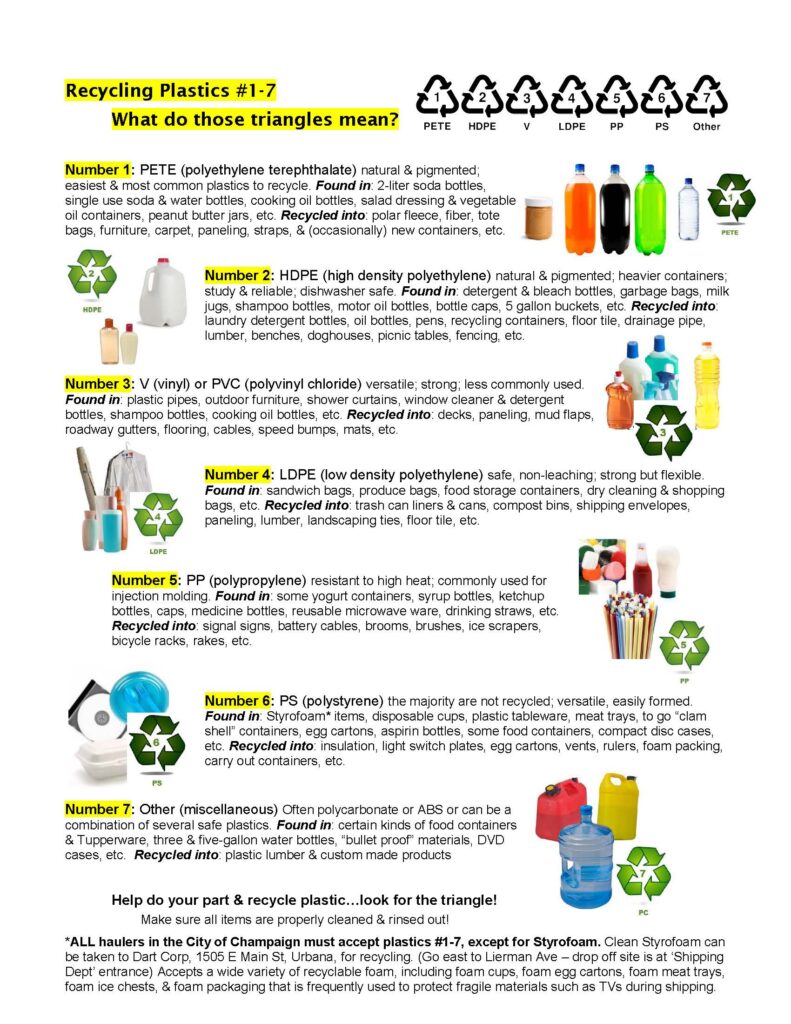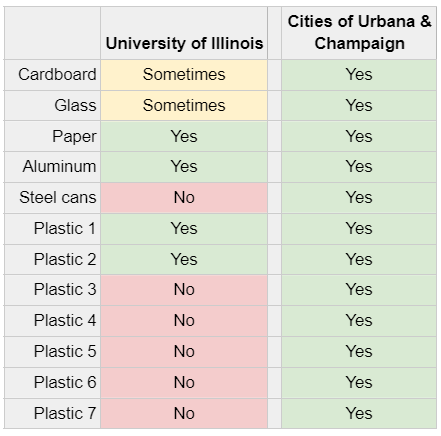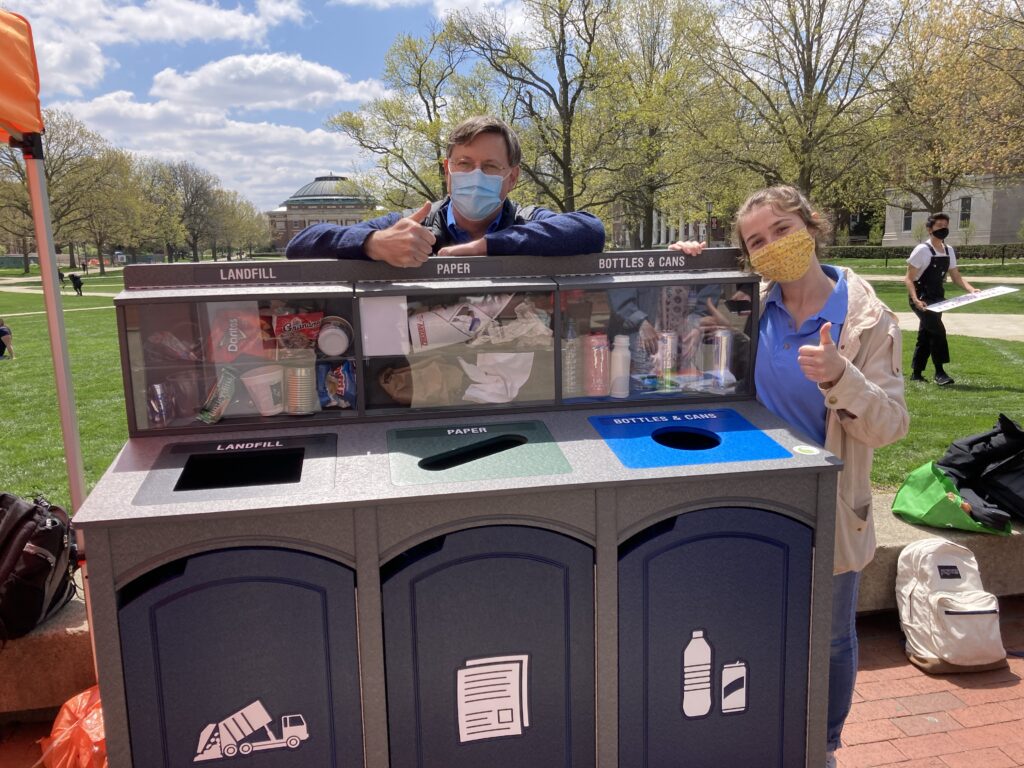In September 2020, one NPR headline had all the environmentalists talking: “How Big Oil Misled The Public Into Believing Plastic Would Be Recycled.” This was no clickbait. Indeed, less than 10 percent of plastic is recycled each year, due to a combination of factors: Plastic degrades so it cannot be recycled infinitely, lots of plastic is never sent to recycling centers in the first place, sometimes it’s more expensive to recycle than to landfill, and myriad other reasons. Still, this bleak stat does not diminish the importance of recycling (along with reducing and reusing as well) — so long as it’s done correctly. Though recycling is not a perfect process, there’s a lot you can do to make it as efficient as possible.
Every municipality has different recycling rules. Some accept glass, others don’t; some accept all plastic, others only specific types of plastic. To streamline the recycling process, acquaint yourself with your local recycling rules.
Plastic
There are seven types of plastic, grouped by their composition and density, explained in this diagram from the City of Champaign recycling webpage. On the University of Illinois Urbana-Champaign campus, only plastics 1 and 2 are collected for recycling. These plastics can be broadly referred to as “beverage containers”: 20-ounce water or soda bottles, 2-liter bottles, milk jugs, and peanut butter jars. The cities of Urbana and Champaign, on the other hand, recycle all types of plastic, 1 through 7.

Credit: City of Champaign
Regardless of the plastic number, very small pieces of plastic should never be recycled. Anything smaller than a credit card runs the risk of jamming machines or simply getting lost in transport. The plastic cap to a single-use water bottle, therefore, should be left on the bottle or thrown away separately.
“Small items often cause more harm than good,” said Meredith Moore, iSEE’s Sustainability Programs Manager. “Anything smaller than a business card should just get thrown away.”
Plastic bags should never be placed in regular recycling bins, and you should never bag your other recyclables in plastic bags. When these soft plastics enter recycling streams intended for cardboard or plastic bottles, they jam and break the machinery. Instead, some grocery stores offer plastic bag drop-off, wherein they go to a specialized recycling stream. On campus, plastic grocery bags are only accepted in a few designated locations: at the Illini Union, the Illini Union Bookstore, Lincoln Avenue Residence Hall, Garage and Car Pool Building, and Wohlers Hall. This includes all soft plastics like Ziplocs (with the press-seal top cut off), bread and cereal bags, and stretchy plastic wraps (e.g., the material around paper towels or drink bottles).
“The rule of thumb is if you can puncture your thumb through the bag, it’s recyclable in the plastic drop-off, but absolutely not in the normal recycling stream,” Moore said.
But there are two better options. Firstly (and preferably!), you can opt not to use plastic grocery bags at all and instead bring a reusable bag to the store. Secondly, you can reuse plastic grocery bags at home.
“Having a reduce and reuse mindset may be challenging at first, but it develops a snowball effect once you stick with it,” said Sydney Trimble, NRES senior and F&S Waste Management Intern. “I remember starting with my kitchen, then my bathroom, and then suddenly it becomes your lifestyle.”
Other materials
 One special case on campus is cardboard. It is not recyclable along with paper, but bins specifically for cardboard are located throughout campus, in places like Parking Lot E-14 at the corner of Kirby & Oak streets. Facilities & Services (F&S) is currently working on an online map to make finding these bins easy. Urbana and Champaign recycle cardboard without any technicalities.
One special case on campus is cardboard. It is not recyclable along with paper, but bins specifically for cardboard are located throughout campus, in places like Parking Lot E-14 at the corner of Kirby & Oak streets. Facilities & Services (F&S) is currently working on an online map to make finding these bins easy. Urbana and Champaign recycle cardboard without any technicalities.
Regardless of where cardboard is recycled, it is important to keep it dry and clean. Wet materials break down more easily than dry ones, which lowers their value, and cardboard contaminated with food is completely unusable. Pizza boxes, for example, are typically too coated in grease to be salvageable for recycling. Unfortunately, they must simply be trashed.
The same goes for other recyclable materials, namely paper and plastic: They must always be dry and clean of contaminants. However, “Don’t waste gallons of water trying to scrub out a peanut butter jar,” Moore said. “They don’t have to be spotless. Soak them overnight. That makes it easier to clean.”
“When you consider the value and quality of recyclables and ensure they aren’t contaminated, you are taking part in the recycling market and improving it,” Trimble said.
Glass is another special case. On campus, only Dining Services in University Housing recycles glass. This is because University Housing uses a different hauler — one that picks up recyclable material — from the rest of campus. Both Urbana and Champaign recycle glass, in the UCycle and Feed the Thing programs, respectively.
Lastly, many household items like batteries and lightbulbs do not fit nicely into any of these categories. For these, the IEPA (Illinois Environmental Protection Agency) plans an annual Household Hazardous Waste Collection Event, organized by representatives from Champaign, Urbana, Savoy, and Champaign County. Even expired pharmaceuticals can be safely disposed of at these events. The 2022 event is scheduled for April 9; registration is required and will open on our about March 9.
In terms of electronics, many of these items have been banned from Illinois landfills because they contain toxic chemicals like mercury, so it’s essential to properly dispose of them. For options nearby, check out the E-Guide for Residents of Champaign County.
Both Urbana and Champaign provide comprehensive instructions on recycling electronics, along with various other items that cannot simply be tossed in the bin.
Wish-cycling
Above all else, Moore and Trimble implore others to avoid “wish-cycling” — when one knowingly or unknowingly puts unrecyclable material in the recycling bin in hopes that it will be recycled after all. Common items like straws, plastic cutlery, and to-go coffee cups are not recyclable, yet they often end up in the recycling stream because folks either are innocently unaware or falsely hopeful.
“I’ve caught myself wish-cycling,” Moore said. “When I have a #5 plastic on campus, it’s so hard not to put it in the recycling bin because I know it’s recyclable! But the university doesn’t accept #5. When I talk to people in the waste industry, they often say that wish-cycling is the biggest problem. It’s a contamination issue.”
Moore said the recycling rule, in this case, is: “When in doubt, throw it out.”
“If I know something is recyclable at home but not on campus, I often bring it home to stop myself from wish-cycling on-campus,” Trimble said.
The recycling process on campus
The University of Illinois is unique in the realm of recycling because we host our very own waste transfer station. Located just south of campus, it processes 10 million pounds of waste a year — and about 2 million of those pounds are recycled. The station is open for tours to both university-affiliated personnel and the general public.
“A lot of universities, companies, and even municipalities do not have their own waste transfer station,” Moore said. “Having your own station is an advantage because we have more oversight of the operations.”
F&S employees collect waste and recycling from all across campus and bring it to the transfer station. The recyclables are dumped onto a conveyor belt, and employees meticulously sort the materials by hand. After sorting, the various recyclable materials are baled and sold to a vendor. The vendor then initiates the actual recycling process wherein new products are made. The revenue from the sale of recyclables helps reduce the cost of handling the landfilled waste.
“I think everyone should tour the waste transfer station because it’s so eye-opening,” Moore said. “When you go there, it’s not just one plastic bottle anymore. You see that one bottle adds up to hundreds.”
Unfortunately, both the university and our vendors have to make recycling decisions with economics in mind. For example, it is more expensive for the university to recycle glass than it is to landfill it, and that’s why glass is not collected on campus.
However, Moore maintains that the inability to recycle everything isn’t the primary concern. Instead, the priority needs to be increasing the efficiency of the infrastructure we already have in place. Counting only accepted recyclables on campus, the university still has a very low diversion rate — that is, we do not divert much waste from landfills.
“If we can recycle every single piece of paper, aluminum can, and plastic beverage container, our diversion rate will be tremendous. Instead of always thinking about what more we can recycle, we need to focus on how we can optimize our current recycling stream and system. Those products — the paper, cans, and containers — are still ending up in the landfill,” Moore said.
New projects on campus
F&S has been improving the recycling infrastructure on campus to make it more user-friendly and ultimately increase our diversion rate. One such project is the implementation of dual outdoor bins. You’ve probably noticed that most of the outdoor trash cans on campus, notably on the Main Quad, are actually a conjoined “landfill” bin and a “recycling” bin.
“We’re trying to eliminate individual receptacles because if there is a trash bin by itself, people will just use a trash bin, even for recyclable material,” Moore said. “But if every single trash bin always has a recycling bin next to it, that’s making it more convenient for people to use the correct bin.”

Showing off the new shadow boxes. Photo credit: Morgan White
Another project, funded by the Student Sustainability Committee (SSC), is the installation of new shadow boxes. These three-compartmentalized bins make it crystal clear what is recyclable and what is not.
“The shadow boxes give you all the choices right when you walk up to them: landfill, paper, and bottles and cans,” Trimble said. “This is special because when recycling bins and trash cans are separated from each other, it can be harder for someone to make the correct choice — especially when they are in a hurry!”
F&S workers installed the first shadow boxes at the Illini Union last semester; they are currently working to install more all over campus.
iSEE is assisting F&S with these infrastructural improvements, as well as focusing on engagement and education. You can vow to help campus be more sustainable by signing the “Use the Bin” Pledge, as described in the iCAP 2020 Objective 5.3.1. This electronic signature is supposed to hold staff, students, and faculty accountable for changing the way they think about waste.
“Behavior change is the biggest thing. At the end of the day, it is somebody’s individual responsibility to do the right thing and to understand what our role is with waste generation,” Moore said.
“We are working on all the other aspects of this massive global problem (climate change and waste management), and you can do your part by putting the correct items in the correct bins!” said Morgan White, Associate Director of F&S.
Reuse and reduce
Despite all of this information, “Recycle” has somehow outshone its counterparts, “Reuse” and “Reduce.” They’re all three parts of a whole. And due to the flaws of recycling, one could argue that reusing and reducing are more important to make a significant decrease in one’s footprint.
“I always emphasize: The first thing is to reduce and reuse,” Moore said. “Our entire society generates way too much recyclable material. The issue isn’t whether we can reuse or repurpose items — the issue is we are way too disposable. Purchase reusable, durable goods instead of single-use, recyclable items. Recycling is a great last resort if you have no other options. But first, rethink if you actually need that plastic to-go cup.”
iSEE hosts a Waste Reduction Challenge every October and a Plastic Free Challenge every March to instill these ideas of reducing consumption into the campus community.
“We must minimize how much waste we generate, whether it’s landfilled or recycled. We of course want to promote recycling, but there is so much we can do before that – actions that are more significant to our whole sustainability goals and mentality,” Moore said.
— Article by iSEE Communications Intern Maria Maring